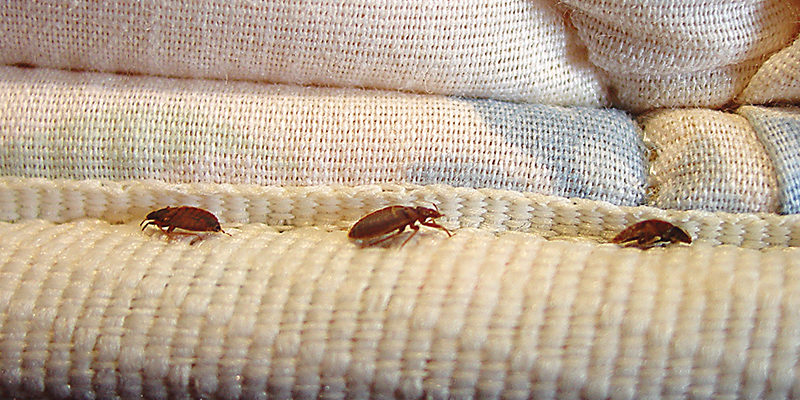
Bed bugs (picture on the left) likely get their name from their habit of feeding on humans while they sleep in their beds. They are found in virtually every place people tend to gather, including residences, hotels, schools, offices, retail stores and even public transportation. If you do identify bed bugs in your home, contact a pest professional promptly. They will be able to inspect your home, confirm the species and recommend a course of bed bug treatment.
HEALTH ISSUES
Not known disease carriers.
Bites can cause an allergic reaction with swelling, redness, and itching.
Skin infection and scarring can result from scratching.
The majority of people do not react to bed bug bites.
Lack of sleep is a serious side-effect causing
reduced alertness, loss of productivity, and mood problems.
PREVENTION
Bed bugs are hard to prevent because of their small size, night habits, and ability to hitchhike. Here are some tips to get you started:
- Be on the look out for signs of infestations such as: waking up with bites; seeing live bugs; or dark red or black spots on bedding, carpets, walls and furniture. Finding bed bugs early is the key to preventing their spread.
- Paint and caulk around sleeping areas – such as along baseboards, windows and bed frames – to seal hiding spots.
- Inspect used furniture closely before bringing into your home. Look for signs of infestations in cushions, zippers, seams, and underneath including springs and frames. Use a magnifying glass if possible. Beware of items in alleys and dumpsters.
- Take a look around mattresses and furniture when staying in an unfamiliar place. Bed bugs can hitch a ride home on your clothing or luggage.
